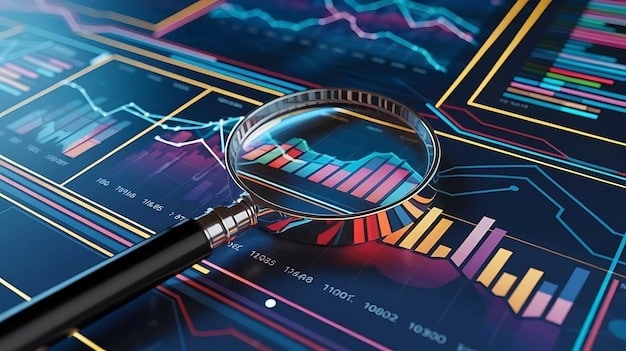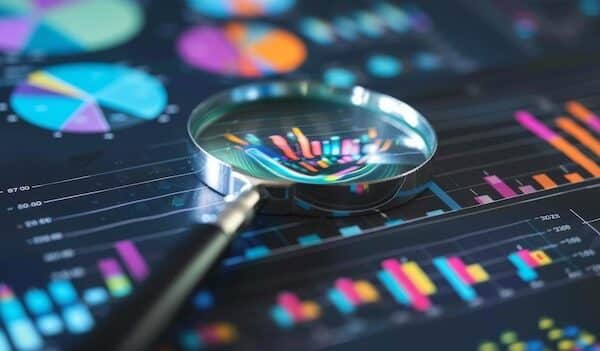Statistical Data Analysis: Method, Modelling, and Science

Statistical Data Analysis: Method, Modelling, and Science
Unlock the power of statistical data analysis: method, modeling, and science to enhance decision-making, optimize processes, and uncover valuable insights.
In today’s data-driven world, businesses rely heavily on data analysis to make informed decisions, optimize processes, and predict trends. Data analysis involves collecting, organizing, interpreting, and presenting data to extract meaningful insights. It plays a pivotal role in transforming raw data into actionable intelligence, helping organizations navigate complex business landscapes.
In this guide, we’ll explore the key aspects of data analysis using terms and concepts crucial to understanding its impact, especially for businesses using Rapid Phone Center’s advanced analytics solutions.

Statistical Method for Data Analysis
Statistical data analysis is the process of applying techniques to data to uncover patterns, relationships, and trends. It involves multiple steps: collecting relevant data, applying the appropriate methods, and interpreting the results. This process helps in making data-driven decisions, minimizing risks, and maximizing opportunities. Discover advanced software data analysis solutions at Rapid Phone Center. Elevate your insights with our cutting-edge tools and expertise!
- Data for Statistical Analysis: This refers to the raw data collected from various sources, such as customer feedback, surveys, sales reports, or any form of business data. Properly structuring and preparing this data is crucial before conducting any analysis.
- Analysis Statistical Data: This involves applying tools to the data to identify patterns or anomalies. Various methods such as regression analysis, hypothesis testing, and correlation analysis can be used depending on the goals of the analysis.
- Data Statistical Analysis: This term emphasizes the use of techniques to explore data. Companies, particularly those like Rapid Phone Center, benefit greatly from robust data analysis to optimize their customer outreach strategies.
- Statistical Analysis of Data: Once the data has been processed, it’s analyzed statistically to understand trends, customer behavior, or market performance. Businesses use this to develop strategies based on evidence rather than intuition.
Rapid Phone Center offers comprehensive solutions for managing data for analysis, helping businesses unlock valuable insights. Our tools streamline the process, ensuring accurate, real-time data handling for strategic decision-making. From data collection to interpretation, we provide seamless integration with advanced analytics for optimized performance and growth.
Descriptive Statistical Data Analysis
Descriptive data analysis focuses on summarizing the main features of a dataset quantitatively. This involves calculating measures such as the mean, median, mode, range, and standard deviation to provide a summary of the data. Unlock insights with Rapid Phone Center’s exploratory data analysis tools. Discover patterns and trends for smarter decision-making!
For instance, in the context of Rapid Phone Center, descriptive statistics might reveal customer satisfaction scores, average response times, or call success rates, which help businesses understand operational efficiency.

Statistical Data Analytics
Data analytics combines the power of statistics and data analysis to gain deeper insights. Unlike basic data analysis, science and data analytics involves more sophisticated techniques like predictive modeling and trend analysis, which can help companies predict customer behavior or market changes.
With Rapid Phone Center, businesses can leverage data analytics to better understand their customers, tailor communication strategies, and improve overall service effectiveness. Enhance your research with Rapid Phone Center’s qualitative data analysis services. Transform data into actionable insights and strategies!
Statistical Analysis and Data: How They Work Together
Analysis and data go hand-in-hand. Without data, analysis is impossible, and without proper analysis, data is just a set of meaningless numbers. The relationship between the two is foundational to making sense of business information.
Key Concepts:
- Statistical and Data Analysis: This refers to the process of using methods to analyze data. It includes applying techniques like probability, sampling, and data visualization.
- Data and Statistical Analysis: This highlights the dual nature of working with both data and tools to extract insights. For businesses, this can mean analyzing customer trends, sales patterns, or market shifts.
- Statistical Data and Analysis: This term underscores the connection between raw data and the analytical process that extracts valuable business intelligence.
At Rapid Phone Center, we utilize advanced models for data analysis to provide businesses with deep insights and data-driven strategies. Our expert team applies rigorous techniques to transform raw data into meaningful information, enabling informed decision-making. Whether you need predictive modeling or trend analysis, our tailored solutions empower your organization to navigate challenges and seize opportunities effectively. Streamline your business with Rapid Phone Center’s ecommerce fulfillment solutions. Fast, reliable, and tailored to your needs!

Statistical Methods in Data Analysis
Statistical methods in data analysis are the backbone of effective business strategy. These methods are techniques used to extract insights from data. They include descriptive statistics, inferential statistics, and predictive analytics. The lead collection process is crucial for capturing potential customers’ information, enabling targeted marketing and effective follow-up.
- Descriptive Statistics: Summarizes data and identifies patterns.
- Inferential Statistics: Makes predictions or inferences about a population based on a sample of data.
- Predictive Analytics: Uses historical data to predict future outcomes.
Rapid Phone Center can use these methods to forecast sales trends, optimize marketing campaigns, and improve customer satisfaction through targeted solutions.
Rapid Phone Center specializes in data analysis services, delivering precise and actionable insights to enhance your business operations. Our advanced tools streamline processes, ensuring accuracy and efficiency in analyzing complex datasets. Partner with us to transform raw data into strategic decisions that drive success and growth in today’s competitive landscape.
Statistical Modelling for Data Analysis
Statistical modelling for data analysis involves creating models that represent data relationships. These models help businesses predict future trends and make informed decisions. Models can range from simple linear regressions to more complex machine learning algorithms. Optimize efficiency with Rapid Phone Center’s back office services. Focus on growth while we handle your administrative tasks seamlessly!

At Rapid Phone Center, modeling might be used to predict customer churn, assess the likelihood of successful sales, or improve targeting in outbound sales campaigns.
Types of Statistical Models for Data Analysis:
- Regression Models: Predict relationships between variables.
- Time Series Models: Analyze data collected over time to identify trends and seasonal patterns.
- Probabilistic Models: Help businesses make decisions under uncertainty.
Businesses thrive when they apply methods in their operations. The combination of methods in data analysis, models for data analysis provides a solid foundation for predictive decision-making and operational optimization.
For example, Rapid Phone Center uses these methods to improve lead generation and sales conversion by analyzing patterns in customer data. They can apply methods to target the right customers at the right time, reducing wasteful outreach efforts and maximizing efficiency. Elevate your support with Rapid Phone Center’s AI customer service solutions. Deliver fast, efficient assistance 24/7 for your clients!
Frequently Asked Questions
Discover the Frequently Asked Questions for statistical data analysis at Rapid Phone Center to enhance your data insights today!

What is data analysis?
Statistical data analysis involves the process of collecting, inspecting, cleaning, transforming, and modeling data with the goal of discovering useful information, informing conclusions, and supporting decision-making. It uses methods to summarize data, identify patterns, and make predictions.
Why is data analysis important?
Data analysis is crucial for understanding data patterns, making informed decisions, validating hypotheses, and improving processes in various fields, including business, healthcare, social sciences, and engineering. It helps organizations optimize performance and manage risks effectively.
How can data analysis impact decision-making?
Statistical data analysis provides evidence-based insights that guide decision-making. It allows organizations to identify trends, forecast future outcomes, assess risks, and measure the effectiveness of strategies, ultimately leading to more informed and effective decisions.

How do you interpret the results of analysis?
Interpreting results involves understanding outputs, such as p-values, confidence intervals, and effect sizes. A p-value less than the significance level (commonly 0.05) indicates a statistically significant result. Contextualizing these results with domain knowledge helps draw meaningful conclusions.
You might also want to explore the offerings we provide:
Thanks, Good Luck to You





